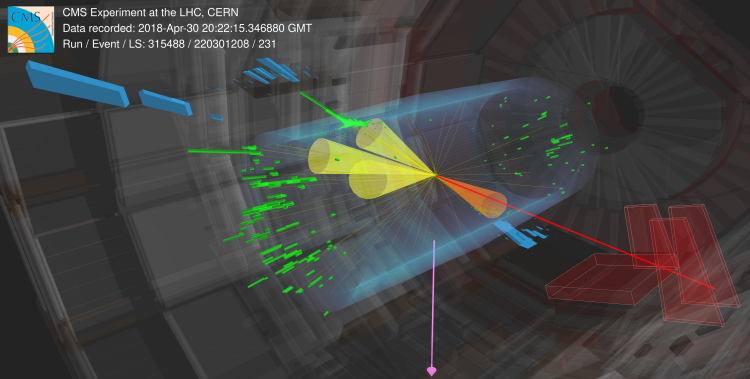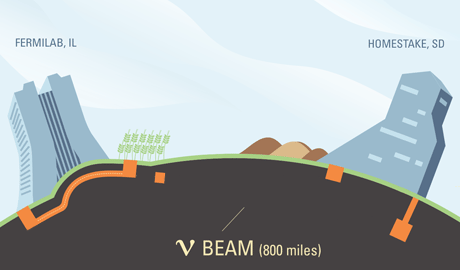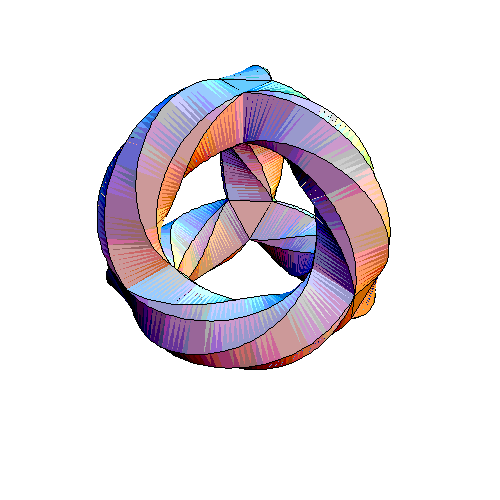Publications
publications by categories in reversed chronological order.
2024
-
 Discovering Nuclear Models from Symbolic Machine LearningJose M. Munoz, Silviu M. Udrescu, and Ronald F. Garcia Ruiz2024
Discovering Nuclear Models from Symbolic Machine LearningJose M. Munoz, Silviu M. Udrescu, and Ronald F. Garcia Ruiz2024Numerous phenomenological nuclear models have been proposed to describe specific observables within different regions of the nuclear chart. However, developing a unified model that describes the complex behavior of all nuclei remains an open challenge. Here, we explore whether novel symbolic Machine Learning (ML) can rediscover traditional nuclear physics models or identify alternatives with improved simplicity, fidelity, and predictive power. To address this challenge, we developed a Multi-objective Iterated Symbolic Regression approach that handles symbolic regressions over multiple target observables, accounts for experimental uncertainties and is robust against high-dimensional problems. As a proof of principle, we applied this method to describe the nuclear binding energies and charge radii of light and medium mass nuclei. Our approach identified simple analytical relationships based on the number of protons and neutrons, providing interpretable models with precision comparable to state-of-the-art nuclear models. Additionally, we integrated this ML-discovered model with an existing complementary model to estimate the limits of nuclear stability. These results highlight the potential of symbolic ML to develop accurate nuclear models and guide our description of complex many-body problems.
2023
-
 A General Framework for Equivariant Neural Networks on Reductive Lie GroupsIlyes Batatia, Mario Geiger, Jose M. Munoz, and 3 more authors2023
A General Framework for Equivariant Neural Networks on Reductive Lie GroupsIlyes Batatia, Mario Geiger, Jose M. Munoz, and 3 more authors2023Reductive Lie Groups, such as the orthogonal groups, the Lorentz group, or the unitary groups, play essential roles across scientific fields as diverse as high energy physics, quantum mechanics, quantum chromodynamics, molecular dynamics, computer vision, and imaging. In this paper, we present a general Equivariant Neural Network architecture capable of respecting the symmetries of the finitedimensional representations of any reductive Lie Group G. Our approach generalizes the successful ACE and MACE architectures for atomistic point clouds to any data equivariant to a reductive Lie group action. We also introduce the lie-nn software library, which provides all the necessary tools to develop and implement such general G-equivariant neural networks. It implements routines for the reduction of generic tensor products of representations into irreducible representations, making it easy to apply our architecture to a wide range of problems and groups. The generality and performance of our approach are demonstrated by applying it to the tasks of top quark decay tagging and shape recognition.
-
 Retrieval of Boost Invariant Symbolic Observables via Feature ImportanceJose M. Munoz, Ilyes. Batatia, Francesco Romeo, and 1 more authorMar 2023
Retrieval of Boost Invariant Symbolic Observables via Feature ImportanceJose M. Munoz, Ilyes. Batatia, Francesco Romeo, and 1 more authorMar 2023Deep learning approaches for jet tagging in high-energy physics are characterized as black boxes that process a large amount of information from which it is difficult to extract key distinctive observables. In this proceeding, we present an alternative to deep learning approaches, Boost Invariant Polynomials \citeMunoz:2022gjq, which enables direct analysis of simple analytic expressions representing the most important features in a given task. Further, we show how this approach provides an extremely low dimensional classifier with a minimum set of features representing %effective discriminating physically relevant observables and how it consequently speeds up the algorithm execution, with relatively close performance to the algorithm using the full information.
2022
-
 Predicting Beta Decay Energy with Machine LearningJose M. Munoz, Serkan Akkoyun, Zayda P. Reyes, and 1 more authorMar 2022
Predicting Beta Decay Energy with Machine LearningJose M. Munoz, Serkan Akkoyun, Zayda P. Reyes, and 1 more authorMar 2022Qβ represents one of the most important factors characterizing unstable nuclei, as it can lead to a better understanding of nuclei behavior and the origin of heavy atoms. Recently, machine learning methods have been shown to be a powerful tool to increase accuracy in the prediction of diverse atomic properties such as energies, atomic charges, volumes, among others. Nonetheless, these methods are often used as a black box not allowing unraveling insights into the phenomena under analysis. Here, the state-of-the-art precision of the β-decay energy on experimental data is outperformed by means of an ensemble of machine-learning models. The explainability tools implemented to eliminate the black box concern allowed to identify uncertainty and atomic number as the most relevant characteristics to predict Qβ energies. Furthermore, physics-informed feature addition improved models’ robustness and raised vital characteristics of theoretical models of the nuclear structure.
-
 BIP: Boost Invariant Polynomials for Efficient Jet TaggingJose M. Munoz, Ilyes Batatia, and Christoph OrtnerJul 2022
BIP: Boost Invariant Polynomials for Efficient Jet TaggingJose M. Munoz, Ilyes Batatia, and Christoph OrtnerJul 2022Deep Learning approaches are becoming the go-to methods for data analysis in High Energy Physics (HEP). Nonetheless, most physics-inspired modern architectures are computationally inefficient and lack interpretability. This is especially the case with jet tagging algorithms, where computational efficiency is crucial considering the large amounts of data produced by modern particle detectors. In this work, we present a novel, versatile and transparent framework for jet representation; invariant to Lorentz group boosts, which achieves high accuracy on jet tagging benchmarks while being orders of magnitudes faster to train and evaluate than other modern approaches for both supervised and unsupervised schemes.
-
 Five texture zeros in the lepton sector and neutrino oscillations at DUNERichard H. Benavides, D. V. Forero, Luis Muñoz, and 3 more authorsJul 2022
Five texture zeros in the lepton sector and neutrino oscillations at DUNERichard H. Benavides, D. V. Forero, Luis Muñoz, and 3 more authorsJul 2022In this work, we have assumed special structures for the charged and neutral mass matrices in the lepton sector, inspired by structures for the up and down quark mass matrices that result by assuming a certain number of symmetrical zeros in their entries named texture zeros. A prediction of the lepton mixing matrix results from the rotation matrices that diagonalize the mass matrices in the neutral and charged lepton sectors. The use of texture zeros reduces the number of spurious parameters to the minimal ones needed to explain observations i.e. charged lepton masses and neutrino oscillation parameters. Specifically, we have considered the case of five texture zeros and we have confronted the resulted lepton mixing matrices with current measurements in the neutrino sector. Finally, sensitivities to the independent parameters in the mixing predicted by the nonequivalent forms were studied using simulated events at the DUNE neutrino oscillation experiment. We have found that DUNE is sensitive to non-zero CP-violation allowed in the models.
- Unsupervised Anomaly Detection for the PLT Detector with the CMS Collaboration at the LHCJose M. MunozSep 2022
This document presents a concise report and review of the Summer Student Project developed towards applying effective machine learning analysis techniques for the unsupervised search of anomalies in the BRIL-PLT experimental data.
2021
-
 Nowcasting economic activity from Google Trends: a Deep Learning approach in post-pandemic timesJesús A. Botero; Andrés F. García; Jose M. Munoz, and Diego F. Montañez-HerreraSep 2021
Nowcasting economic activity from Google Trends: a Deep Learning approach in post-pandemic timesJesús A. Botero; Andrés F. García; Jose M. Munoz, and Diego F. Montañez-HerreraSep 2021Covid-19 is the perfect example of an exogenous shock, generating disruptive changes, as its impact, together with the deployment of government policies to prevent its propagation, has caused a sharp contraction in economic activity, the magnitude of which has yet to be determined, defying traditional economic forecasting tools. In this regard, this article contributes to the emerging literature on immediate GDP forecasting in advanced and emerging economies using artificial intelligence methods based on Google Trends data. It then combines current forecasts obtained from a number of Deep Learning (DL) techniques to be de- fined below (LSTM, GRU, CNN, TCN, DMLP) y auto-encoder model, which are capable of handling high-dimensional information sets, capturing non-linear relationships and disruptive changes such as those caused by the pandemic.
-
 El Universo Algebráico (The Algebraic Universe)Jose M. Munoz, and Vasquez EstebanSep 2021
El Universo Algebráico (The Algebraic Universe)Jose M. Munoz, and Vasquez EstebanSep 2021